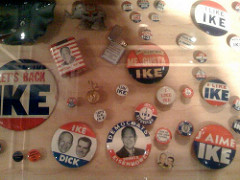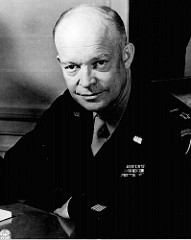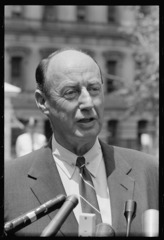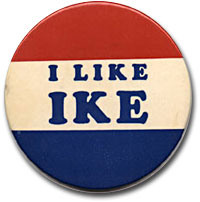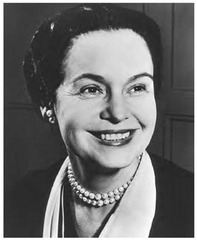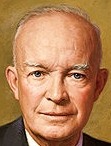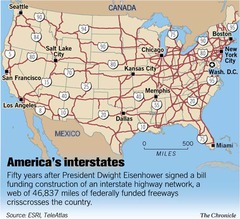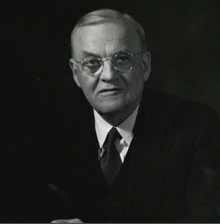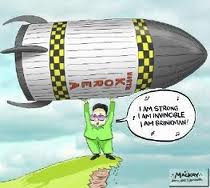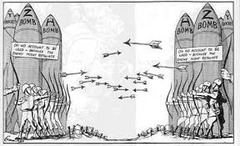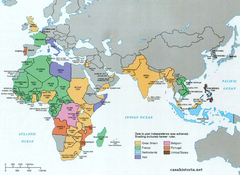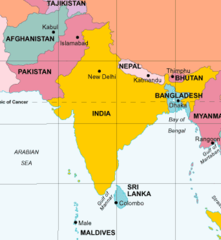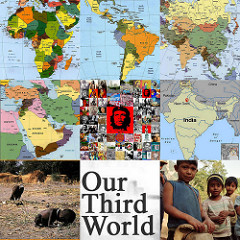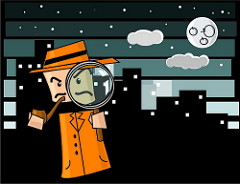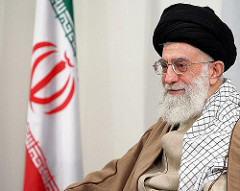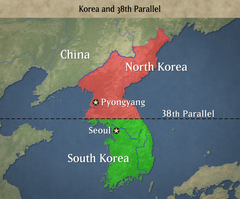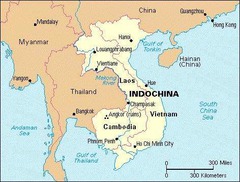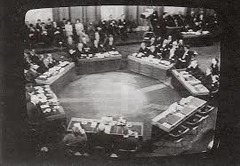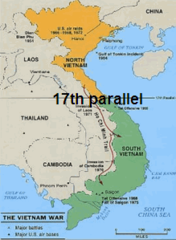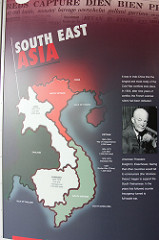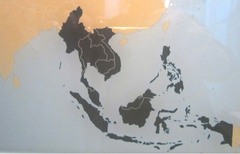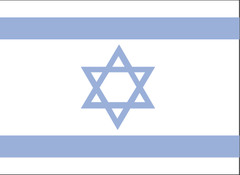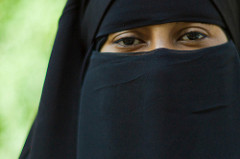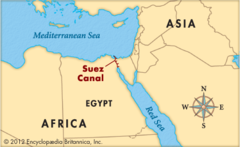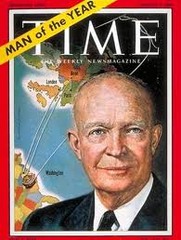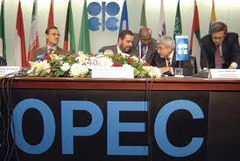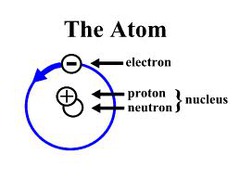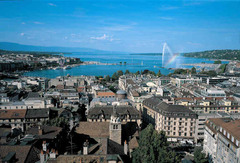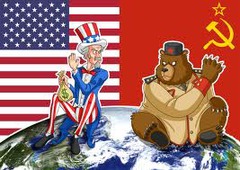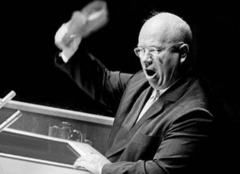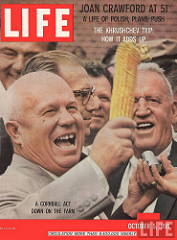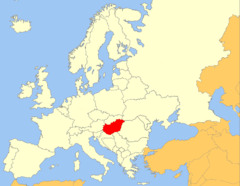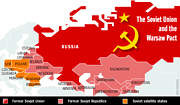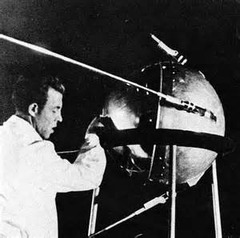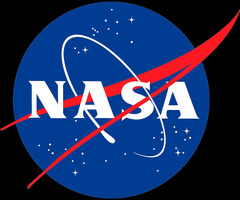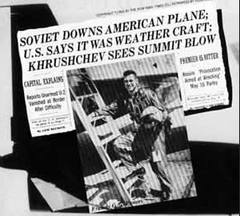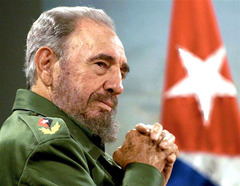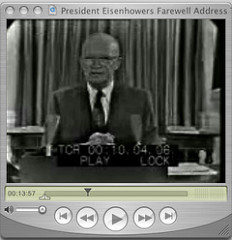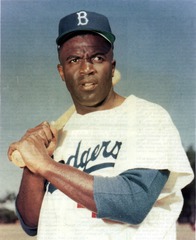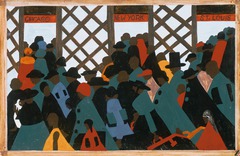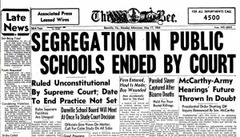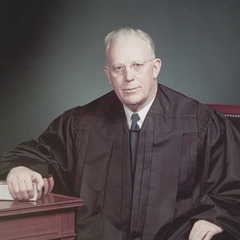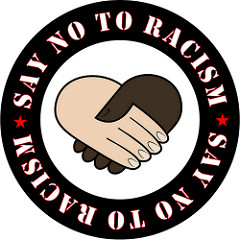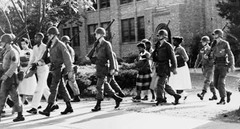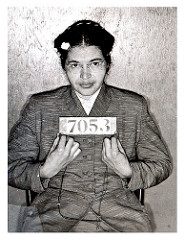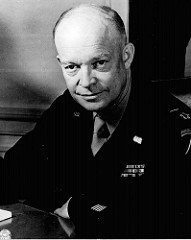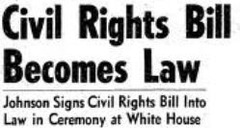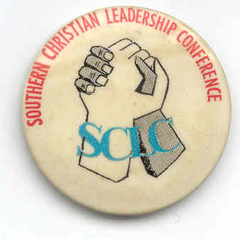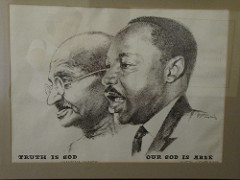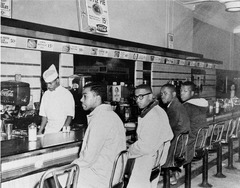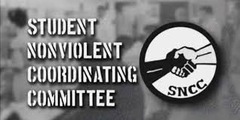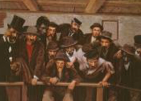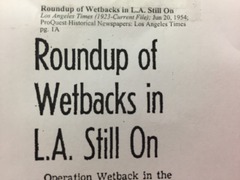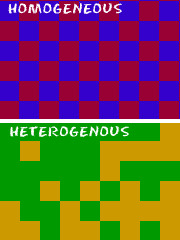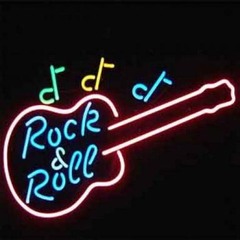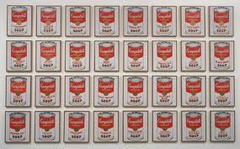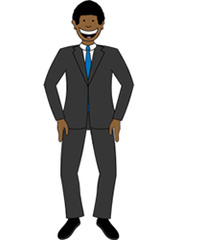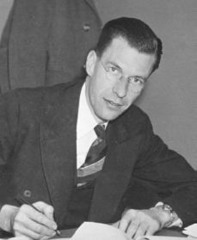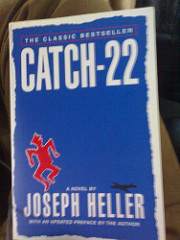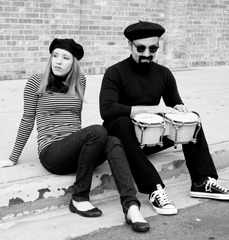elections of 1952, 1956
In these two presidential elections Dwight Eisenhower and Richard Nixon defeated Adlai Stevenson quite easily. (p. 580-581)
Dwight Eisenhower
The United States general who supervised the invasion of Normandy and the defeat of Nazi Germany. In the election of 1952 he became the the 34th President of the United States. (p. 579)
Adlai Stevenson
An Illinois governor and the Democratic presidential nominee in 1952 and 1956. He lost both elections to Dwight Eisenhower and Richard Nixon. (p. 580)
Richard Nixon
He was vice president under Dwight Eisenhower. In 19868, he would become the 37th President of the United States, but in 1974 he resigned in disgrace after the Watergate scandal. (p. 580)
modern Republicanism
President Eisenhower's term for his balanced and moderate approach to governing. Claiming he was liberal toward people but conservative about spending money. He helped balance the federal budget and lowered taxes without destroying existing social programs. (p. 580)
Dept. of Health, Education and Welfare (HEW)
In 1953, President Eisenhower consolidated welfare programs under this new department, run by Oveta Culp Hobby, the first woman in a Republican cabinet. (p. 580)
soil-bank program
President Eisenhower created this program as a way to reduce farm production, thereby increasing farm income. (p. 580)
Highway Act; interstate highway system
The most permanent legacy of the Eisenhower administration was this act passed in 1956. It created 42,000 miles of highway linking every major city in the nation. (p. 580)
John Foster Dulles
In the Eisenhower administration, he was the Secretary of State that pursued a policy of pushing the USSR and China to the brink of war. However, Eisenhower prevented him from carrying his ideas the extreme. (p. 581)
brinksmanship
The principle of pushing Communist nations to the brink of war, thinking they would back down because of American nuclear superiority. (p. 581)
massive retaliation
This was Eisenhower's policy, it advocated the full use of American nuclear weapons to counteract even a Soviet ground attack in Europe. (p. 582)
decolonization
After World War II, dozens of European colonies in Asia and Africa became independent countries. (p. 582)
India, Pakistan, Indonesia
From 1947 to 1949, these three countries gained their independence. (p. 582)
Third World
Term applied to a group of developing countries that often lacked stable political and economic institutions. Their need for foreign aid often made them pawns of the United States and the Soviet Union during the Cold War. (p. 582)
CIA, covert action
Undercover intervention in foreign government by the CIA during Eisenhower's presidency. (p. 582)
Iranian overthrow
In 1953, the CIA helped overthrow this government and established a monarch ruler with close ties to the U.S. He provided favorable oil prices and purchased American military arms. (p. 582)
Korean armistice
In July 1953, China and North Korea agreed to an armistice that would divide Korea into North Korea and South Korea near the 38th parallel. (p. 583)
Indochina
In the early 1950s, France was fighting to retake control of their colony in southeastern Asia. The French were defeated in 1954 and they agreed to give up Indochina, which was divided into the nations of Cambodia, Laos, and Vietnam. (p. 583)
Ho Chi Minh
The North Vietnam Communist dictator who fought the French until 1954, and South Vietnam until 1975. (p. 583)
Geneva Conference
A 1954 conference between many countries that agreed to end hostilities and restore peace in French Indochina and Vietnam. (p. 583)
division of Vietnam
By the terms of the Geneva Convention, Vietnam would be temporarily divided at the 17 parallel until a general election could be held. A prolonged war (1954-1975) occurred between the Communist armies of North Vietnam who were supported by the Chinese and the non-communist armies of South Vietnam who were supported by the United States. (p. 583)
domino theory
The political theory that if one nation comes under Communist control then neighboring nations will also fall to Communist control. (p. 583)
Southeast Asia Treaty Organization
In 1954, an international organization for collective defend and block further Communist gains is Southeast Asia. (p. 583)
State of Israel
In 1948, after a civil war in the British mandate territory of Palestine left the land divided between the Israelis and the Palestinians, this nation was founded. The United Nations oversaw the process and many neighboring countries fought against the creating of this Jewish state. (p. 584)
Arab nationalism
Arab nationalist General Gamal Nasser of Egypt, asked the United States for funds to build the Aswan Dam on the Nile River. (p. 584)
Suez Canal Crisis
In July 1956, Egypt sized the British and French owned Suez Canal. Britain and France carried out a surprise attack and retook the canal. The United States sponsored a U.N. resolution condemning the invasion of Egypt. Eventually Britain and France withdrew their troops. (p. 584)
Eisenhower Doctrine
This 1957 doctrine, pledged United States economic and military aid to any Middle Eastern country threatened by Communism. (p. 584)
Organization of Petroleum Exporting Countries (OPEC)
In 1960, Saudi Arabia, Kuwait, Iraq, Iran, and Venezuela formed this organization of oil-producing nations. (p. 584)
atoms for peace
In 1953, President Eisenhower's proposal to the U.N. to slow down the arms race. (p. 585)
spirit of Geneva
The 1955 meeting in Geneva, which produced the first thaw in the Cold War. (p. 585)
open-skies
The Soviets rejected this proposal for open aerial photography of eachothers territory in order to eliminate surprise nuclear attacks. (p. 585)
Nikita Khrushchev
The ruler of the USSR from 1958-1964. He reduced government control of Soviet citizens and sought peaceful coexistence with the West. (p. 585)
peaceful coexistence
In early 1956, Soviet leader Nikita Khrushchev, gave a speech in which he denounced the crimes of Joseph Stalin and supported "peaceful coexistence" with the West. (p. 585)
Hungarian revolt
In October 1956, Hungary actually succeeded in overthrowing a government backed by Moscow. The Soviets sent in tanks to crush the freedom fighters and restore control over Hungary. The United States took no action in the crisis and gave de facto recognition of the Soviet sphere of influence in Eastern Europe. (p. 586)
Warsaw Pact
This 1945 agreement formed formed an alliance of the Eastern European countries including the USSR, Albania, Bulgaria, Czechoslovakia, East Germany, Hungary, Poland, and Romania. (p. 586)
Sputnik
In 1957, the Soviet Union shocked the United States by launching the first space satellites into orbit around the earth. Fears of nuclear war were intensified since the missiles that launched the satellites could also deliver nuclear warheads anywhere in the world within minutes. (p. 586)
NDEA, NASA
In 1958, Congress created the National Defense and Education Act (NDEA) and the National Aeronautics and Space Administration (NASA). (p. 586)
U-2 incident
In 1960, the Soviet military used a guided missile to shoot down an American U-2 spy plane over Soviet territory, revealing a formerly secret American tactic of the Cold War. (p. 586)
Cuba, Fidel Castro
A bearded socialist leader who overthrew a dictator in 1959 and established a Marxist socialist state in Cuba, only 90 miles from the United States. He nationalized American-owned businesses and the U.S. cut off trade with the country. (p. 587)
military-industrial complex
In his farewell address, President Eisenhower warned the nation to "guard against the acquisition of unwarranted influence... by the military-industrial complex". (p. 587)
Jackie Robinson
The first African American player in major league baseball. His actions helped to bring about other opportunities for African Americans. (p. 588)
causes of movement
The origins of the 1950s civil rights movement was the migration of African Americans to the North where they gained more political power. As the United States battled the Soviets for the hearts and minds of people around the world, it was clear that racial discrimination in the U.S. was a wrong that needed to be corrected. (p. 588)
NAACP
The National Association for the Advancement of Colored People tried to protect the constitutional right of African Americans. (p. 588)
desegregation
The action of incorporating a racial or religious group into a community. (p. 588)
Brown v. Board of Education of Topeka
In May 1954, the Supreme Court agreed with Thurgood Marshal and ruled that "separate facilities are inherently unequal" and unconstitutional, and that school segregation should end immediately. (p. 588)
Earl Warren
Chief Justice of the Supreme Court, who presided over the Brown v. Board of Education of Topeka case, which overturned Plessy v. Ferguson. (p. 588)
Southern Manifesto
After the Brown v. Board of Education of Topeka Supreme Court decision, 101 members of Congress signed this manifesto condemning the Supreme Court for a "clear abuse of judicial power". (p. 588)
Little Rock Crisis
In 1957, Governor Faubus used the Arkansas National Guard to prevent nine black students from entering Little Rock Central High School. President Eisenhower sent federal troops to ensure the black students could attend class. (p. 589)
Rosa Parks
In 1955, in Montgomery, Alabama, a middle aged black woman refused to give up her seat on a bus, which led to her arrest for violating segregation laws. This triggered an African American protest of boycotting the city buses. (p. 589)
Montgomery bus boycott
Rosa Park sparked a massive Afican American protest of the Montgomery, Alabama buses. (p. 589)
Martin Luther King Jr.
The minister of a Baptist church in Montgomery, Alabama, and a civil rights leader. (p. 589)
Civil Rights acts of 1957, 1960
The first civil rights laws since Reconstruction, they formed the Civil Rights Commission and provided some protection for the voting rights of blacks. (p. 590)
Civil Rights Commission
Created by civil rights laws of 1957 and 1960. (p. 590)
Southern Christian Leadership Conference
In 1957, Martin Luther King Jr. organized ministers and churches to create this civil rights organization. (p. 590)
nonviolent protest
To call attention to the injustice of segregated facilities students would deliberately invite arrest by sitting in restricted areas. (p. 590)
sit-in movement
In February 1960, African American college students in Greensboro, North Carolina created this protest after they were refused service at a segregated Woolworth's lunch counter. (p. 590)
Student Nonviolent Coordinating Committee
In 1960, an organization that called attention to the sit-in movement. (p. 590)
immigration issues
In the 1950s, Congress dropped the bans on Chinese and other Asian immigrants and eliminated race as barrier to naturalization. (p. 590)
Operation Wetback
In the early 1950s, this program forced an estimated 3.8 million people to return to Mexico. (p. 590)
homogeneity
A description of American 1950s culture. (p. 590)
popular culture
In the 1950s, white suburbanites conformed to societal norms. (p. 590)
paperbacks
This innovation in books, started in the 1950s, and led to the sales of a million copies per day by 1960. (p. 591)
television
A curiosity in the late 1940s, by 1961 there were 55 million of these devices in America. (p. 591)
rock and roll
Teenagers loved this popular music which was available as inexpensive records during the 1950s. (p. 591)
consumer culture
In the 1950s, consensus and conformity were hallmarks of the American culture. Television, advertising, and the middle-class move to the suburbs, contributed to this culture. (p. 590)
fast food
There was a proliferation of these restaurants in the 1950s. (p. 591)
credit cards
A new method of payment in the 1950s. (p. 591)
conglomerates
In the 1950s, large businesses with diversified holdings began to dominate industries such as food processing, hotels, transportation, insurance, and banking. (p. 591)
social critics
In the 1950s, conformity was valued. William
Whyte documented the loss of individuality in his book, "The Organization Man" (p. 591)
The Lonely Crowd
In 1958, this book by Harvard sociologist David Riesman criticised the replacement of inner direct individuals with other directed conformists. (p. 592)
The Affluent Society
In 1958, economist by John Kenneth Galbraith wrote this book about the failure of wealthy American to address the need for increased social spending for the common good. (p. 592)
The Catcher in the Rye
A 1950s book by J. D. Salinger, it provided a classic commentary on phoniness as viewed by a troubled teenager. (p. 592)
Catch-22
A 1950s book by Joseph Heller that satirized the stupidity of the military and war. (p. 592)
beatniks
A group of rebellious writer and intellectuals led by Jack Kerouac and Allen Ginsberg. They advocated spontaneity, use of drugs, and rebellion against societal standards. (p. 592)
